US to leave Syria-Turkey border observation posts in effort to buy withdrawal time
ERBIL, Kurdistan Region of Iraq – U.S. officials are planning to pull out of recently-built observation posts on the Syrian side of the Syria-Turkey border, The Defense Post learned on Wednesday, December 19.
The move is part of a impromptu effort to buy time in the hope of productive political engagement with Turkey before the withdrawal of U.S. forces from the country, according to a State Department official.
The revelation comes just house after White House confirmed that U.S. forces will withdraw from Syria, saying in a statement: “We have started returning United States troops home as we transition to the next phase of this campaign” against Islamic State.
The U.S. intends to leave the outposts, some of which are located in Kobane, Tal Abyad and Tal Arqam, in an attempt to show Turkey the American withdrawal is legitimate, according to the source.
The U.S. plan is to coordinate with Ankara to ensure as many of the stated U.S. goals in Syria can be maintained without the presence of American forces in the country, including continued support for the Syrian Democratic Forces, which faces the threat of imminent attack by Turkey.
It is unclear in what capacity that support will be provided. The SDF lacks heavy weapons and even helmets for most of its fighters, and relies heavily on close U.S. air support for success on the battlefield.
U.S. officials on Wednesday were resistant to any commitment to a timeline for U.S. forces to withdraw. It is also unclear how quickly the observation posts will be dismantled.
According to the source, U.S. officials fear that maintaining the observation posts could trigger Turkish aggression, but will not prevent any inevitable incursion.
Part of the plan is a proposed deployment of other forces intended to create a buffer to prevent an outbreak of fighting between the SDF and the Turkish military, which American officials fear could put U.S. forces at serious risk.
Turkish President Recep Tayyip Erdogan has repeatedly vowed to clear Syria’s eastern Euphrates region of U.S.-backed People’s Protection Units (YPG), a key component of the SDF. The SDF has seized swaths of territory from ISIS in northern and eastern Syria, backed by U.S.-led Coalition troops, who advise and assist the force.
The predominantly Kurdish YPG is considered by the Turkish government to be inextricably linked to the outlawed Kurdistan Workers’ Party (PKK), which has fought a decades-long insurgency in Turkey, and is designated as a terror group by Turkey and its Western allies.
But the YPG is not a proscribed organization in the European Union, United Kingdom or United States.
Earlier this week Erdogan said Turkey would launch a new operation against the YPG east of the Euphrates “within days.” He insisted that U.S. forces would not be the target of a Turkish invasion.
In an interview with Reuters last week, SDF commander-in-chief General Mazloum Kobani said his forces were prepared to fight any Turkish incursion and called on the United States to step up diplomatic engagement with Turkey to resolve the crisis.
Both the U.S. and SDF have stated that any Turkish attack would divert sorely-needed SDF fighters from the ongoing battle against the last remaining ISIS territorial stronghold near Hajin, not far from the Iraq border on the Euphrates river.
“If there is a Turkish attack, the YPG forces will be forced to come protect the borders, to defend their families,” Mazloum told Reuters. If that occurs, Mazloum said, “the battle against Daesh is not possible.”
‘We have defeated ISIS in Syria’
U.S. President Donald Trump tweeted on Wednesday: “We have defeated ISIS in Syria, my only reason for being there during the Trump Presidency.”
It is not clear if Washington has a clear plan to complete the ongoing ground operations against ISIS, which U.S. special envoy for the global coalition to defeat ISIS Brett McGurk said just last week could take “a period of months.”
McGurk also said U.S. forces would remain in Syria after the “physical defeat of the caliphate,” and that any other approach would be “reckless.”
There is still a large number of ISIS sleeper cells throughout northern Syria. “If the U.S. pulled out tomorrow, ISIS would be outside Qamishli in 24 hours,” a U.S. intelligence source told The Defense Post last week, referring to the main administrative center of SDF-controlled territory.
Other forces to deploy?
Washington’s plan for the border includes a U.S.-brokered attempt to organize a force of Rojava Peshmerga and a small number of fighters under the command of Syrian opposition leader Ahmed Jarba, according to the source, as well as efforts to accelerate implementation of the “Manbij roadmap” agreed to between the U.S. and Turkey last June.
The number of men under Jarba’s authority is unclear, but sources with knowledge of the matter say it is relatively small. Among the groups under his command are Jaysh al-Nukhba, or Syrian Elite Forces, a unit of former Free Syrian Army fighters which were absorbed into the SDF, then subsequently sidelined.
A representative of the Syrian Elite Forces was unavailable for comment.
The Rojava Peshmerga, made up mainly of Syrian Kurdish fighters based in northern Iraq, was formed in 2015 as the military wing of the Syrian Kurdish National Council (ENKS), a rival party to the YPG-allied Democratic Union Party (PYD).
A convoy of Rojava Peshmerga was reportedly turned away earlier this week after trying to enter northern Syria. The implications for the U.S. plan are unclear.
As of Wednesday morning, Amina Omar, co-Chairperson of the Syrian Democratic Council, the political wing of the SDF, had not been officially informed of the plan to deploy Rojava Peshmerga, she told The Defense Post.
Amina added that the U.S. outposts were still in place, and a new one had just been constructed at Bahr Abyad.
About 2,000 U.S. troops are officially in Syria where they work with the SDF in the northeast and the vetted Syrian opposition group Jaysh Maghawir al-Thawra (MaT) in the south at At-Tanf, which controls the Damascus-Baghdad highway on the Syria-Jordan border.
The Trump administration’s planned withdrawal may include U.S. forces stationed at the Tanf base, according to a U.S. intelligence source. Some 40,000 Syrian refugees remain stranded at the Rukban refugee camp within the 55-km deconfliction zone around the base.
Syria border observation posts
Turkish National Defense Minister Hulusi Akar asked U.S. Special Representative for Syria Engagement James Jeffrey to remove the border observation posts during their meeting in Ankara on December 7, and pressed the U.S. to “end its relationship” with the YPG.
U.S. Defense Secretary James Mattis announced on November 21 that the posts were intended to “track any threat that we can spot going up into Turkey.”
Mattis acknowledged Ankara’s concerns, but insisted that the YPG is not the same as the PKK.
One week earlier, Jeffrey had publicly stated that the PYD is an offshoot of the PKK, challenging the official line of the U.S. Defense Department in an apparent gesture to Ankara.
“We can’t do any of the things we’re doing in Syria without the active participation, cooperation, coordination with Turkey,” Jeffrey said at the Defense One forum in Washington.
“But we also cannot be present in the northeast of the country and continue the fight against Da’esh – which is not yet over – unless we have a local partner, and that local partner since 2014 has been the PYD, which is a Syrian offshoot of the PKK.”
Jeffrey pointed out that the U.S. had not provided the SDF with heavy weapons in honor of Turkey’s requests.
“It’s not a question of placating one or the other … That’s the dilemma we have, and we’re trying to convince both sides,” Jeffrey said.
Earlier this week, Turkish Foreign Minister Mevlut Cavusoglu said the U.S. could not “contain” the proposed Turkish operation to clear U.S.-backed fighters from territory east of the Euphrates.
The U.S. Defense Department announced last week that it would find any such incursion “unacceptable,” but did not articulate any clear steps to be taken should the Coalition partner-force come under Turkish attack.
The U.S.-led Coalition has struck non-ISIS forces on numerous occasions, citing its legal right self-defense and “the defense of partner forces” under the 2001 Authorization for the Use of Military Force, but has refrained from retaliating for Turkish attacks on the YPG.
“The Coalition hopes diplomacy works before anything else,” Coalition spokesperson Colonel Sean Ryan told The Defense Post on Friday.
SDC’s Amina Omar told The Defense Post that the U.S. had not given them any guarantees of protection in the case of Turkish invasion.
“The Americans should protect this territory, but it is clear that their political objectives are just the defeat of ISIS,” she said.
“Given the threats of marching in to deal with this problem themselves, the U.S. at every level has reached out to the Turks,” Jeffrey said at an Atlantic Council event on Monday.
“We think that any offensive into northeastern Syria by anyone is a bad idea. That was a position that I conveyed when I was in Ankara, that everyone from the president on down has conveyed,” he said.
Jeffrey met with Turkish officials in Ankara earlier this month to discuss the situation east of the Euphrates and address Turkey’s concerns.
“There’s no question that Pompeo and Jeffrey are making a concerted effort to bring the Turks off the ledge,” former Syria Director at the National Security Council Alex Bick told The Defense Post.
“Not just because they don’t want the Turks fighting the SDF, but from a bigger geostrategic perspective, they see Turkey as a more important ally for the United States,” he said.
Asked whether she expected the U.S. to assist in the case of Turkish invasion, Omar responded, “Nothing is certain.”



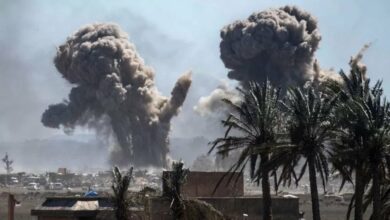

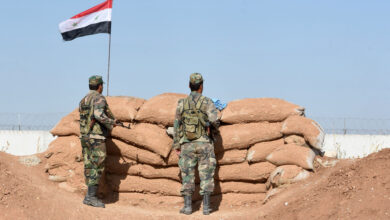
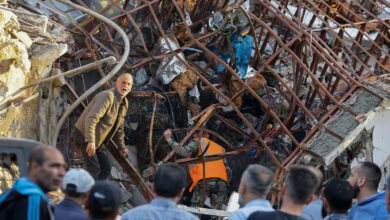

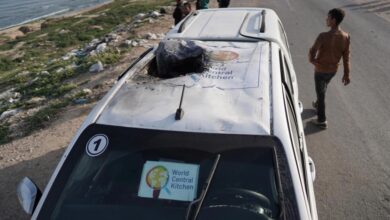
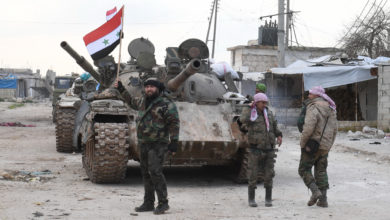
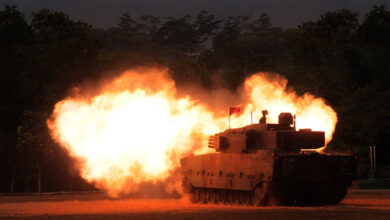

7 Comments